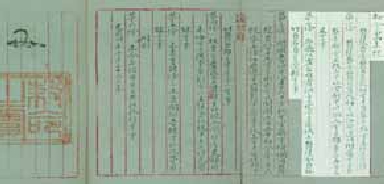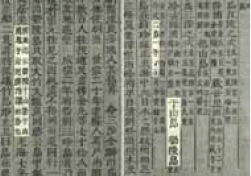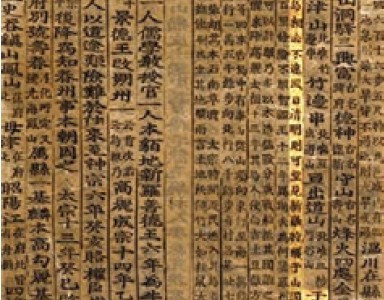- English
- 한국어



Japan’s current argument over Dokdo’s ownership is based on the opinion that Dokdo was already Japan’s territory when it was forcibly incorporated into Japan’s Shimane prefecture in 1905. However, many historical documents and maps from the Joseon Dynasty (1392-1910) confirm that Dokdo was part of Korea many years before the 20th century.
Sejong Silok, Jiriji (1454)
Sejong Silok, Jiriji, Geography Section of the Annals of King Sejong’s Reign, is a government compilation that contains Joseon’s territorial records. This geographical record explains that Ulleungdo (Mureung) and Dokdo (Usan) are part of Uljin-hyeon (Uljin prefecture) of Gangwondo (Gangwon province). It also records that Dokdo can be seen with the naked eye from Ulleungdo, indicating that geographically, Dokdo is part of Ulleungdo.
“The two islands of Usan [Dokdo] and Mureung [Ulleungdo] are located in the middle of the sea due directly east of the hyeon [Uljin prefecture]. “Usan [Dokdo], Mureung [Ulleungdo]… The two islands are not far apart from each other and thus visible on a clear day.”
Dongguk Munheon Bigo (1770), Yeojigo (1770)
Similar to Sejong Silok Jiriji, Yeojigo in Dongguk Munheon Bigo is an additional geography book that contain geographical information about Joseon. This book emphasizes Korea’s governance over Dokdo since the Silla Dynasty in the early 6th century and states that Dokdo and Ulleungdo are both part of the Usan-guk (Usan State), which was conquered by Silla in AD 512.
“Usando [Dokdo], Ullengdo… Together, these two islands comprise Usan… According to Yeojiji [Geography of Korea], it is said that Ulleung and Usan are both territories of Usan-guk and that Usan is what the Japanese refer to as Matsushima [old Japanese name for Dokdo].”
Imperial Edict No.41 (1900)
After Japan’s Meiji Restoration, Japanese people began to gradually increase their visits to Ulleungdo and Dokdo. The government of Korean Empire, alarmed by this, elevated the post of Ulleungdo to a county and placed Dokdo under the jurisdiction of Uldo-gun (Ulleungdo county). Imperial Edict No.41 is an important historical record that proves that the Korean Empire recognized Dokdo as part of Ulleungdo and exerted sovereign authority over Dokdo.
(Imperial Edict No.41) Renaming of Ulleungdo to Uldo and the changing of the post of Inspector [dogma] to county magistrate [gunsu] Article 1. Ulleungdo shall be renamed Uldo and shall fall under the jurisdiction of Gangwon-do [Gangwon province]. The post of inspector [dogam] shall be charged to county magistrate [gunsu] and incorporated into officialdom, and the county shall be a class-5 county. Aricle 2. The location of the county office shall be Taeha-dong, and as regards the districts, all of Ulleungdo as well as Jukdo and Seokdo [Dokdo] shall be placed under the jurisdiction of [Uldo-gun (Uldo county)].
References
Hanguksa Sajeon Pyeon-chan-hwae (2007, March 30). Encyclopedia of the Korean Ancient-Middle Age History. Seoul, Korea: Garam Gi-hwaek
Hosaka, Y. (2010, September 15). Daehanminguk Dokdo [Dokdo of Korea]. Seoul, Korea: Sejong University Dokdo Research Institute, & Chaek-Mun. Ministry of Foreign Affairs, Republic of Korea. Dokdo, Beautiful Island of Korea. In Ministry of Foreign Affairs, Republic of Korea. Retrieved from http://dokdo.mofa.go.kr/eng/pds/pdf.jsp
Northeast Asian History Foundation. (2012, September 6). Ten Truths About Dokdo Not Known in Japan. In Dokdo Research Institute. Retrieved from http://www.nahf.or.kr/Data/board_100/dokdo_Truth/English.pdf



